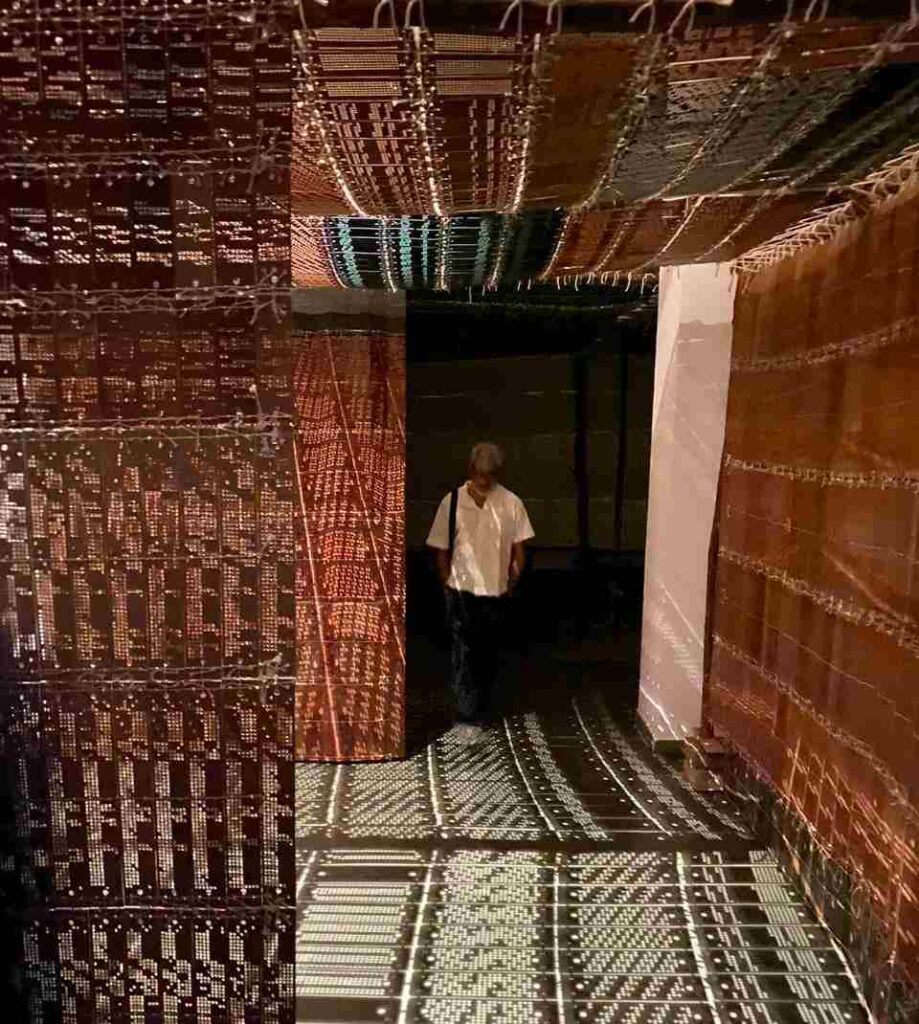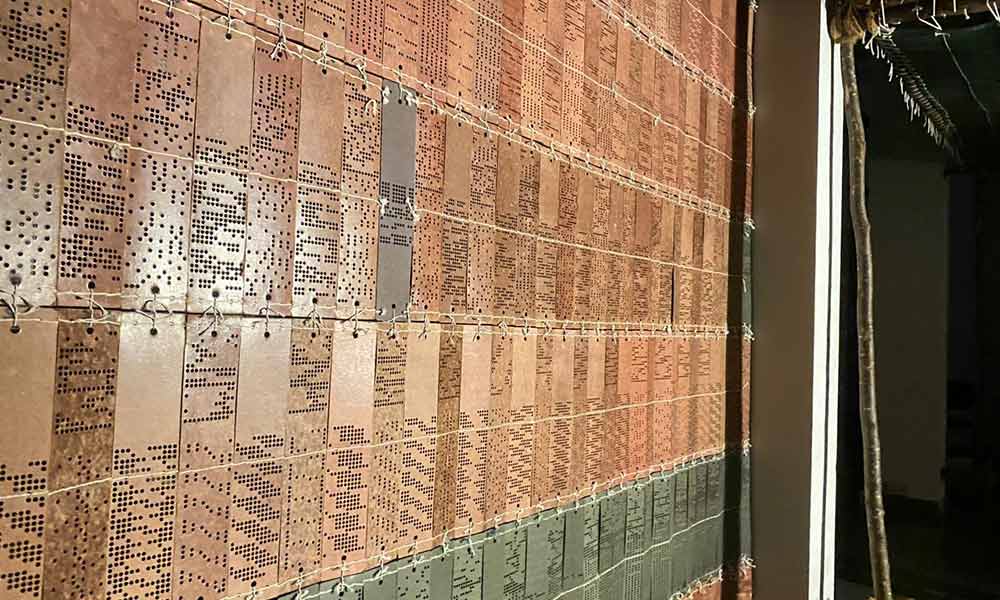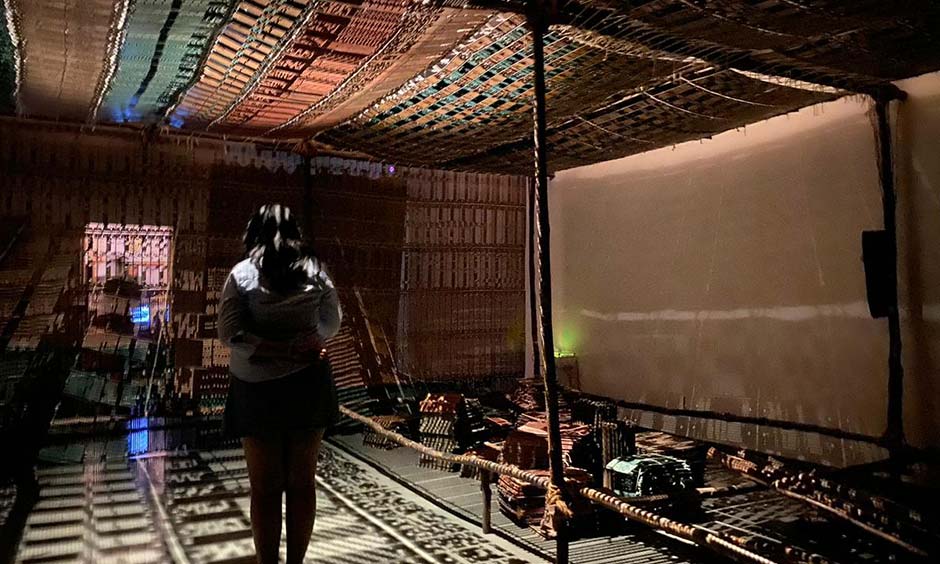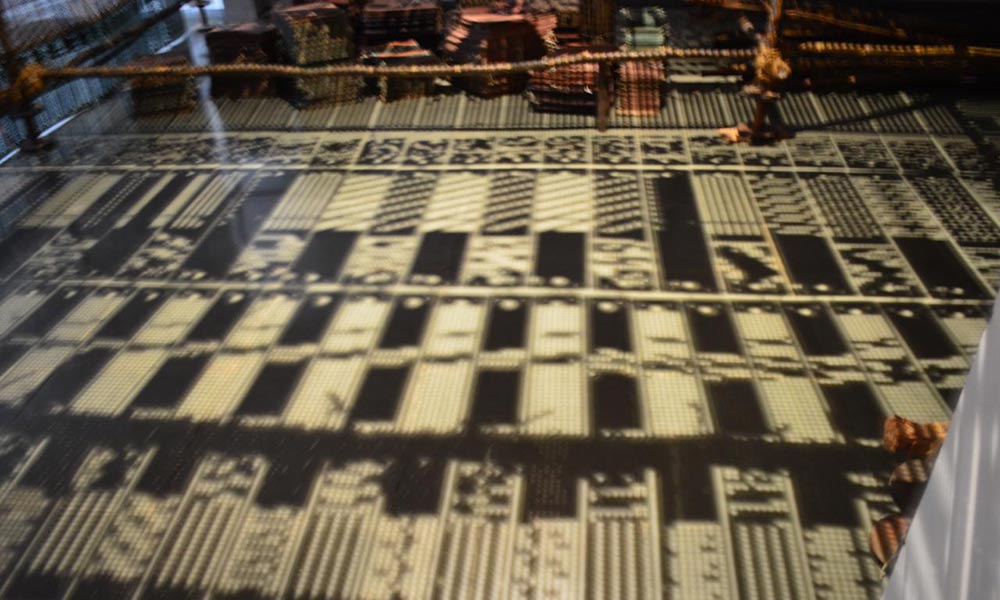Jacquard punching cards are being replaced by the computer designed analytical engine weaves.
The textile industry is seeing a significant shift as the timeless art of jacquard brocade print on cardboard, designed by the skilled artisans, is being replaced by the computer-designed analytical engine weaves, said Viraj, a fashion designing professor visiting the Weaving Lights exhibition.
Weaving Lights, a project aimed at illuminating the perforation holes of the jacquard punching cards into contemporary lived-in forms, was organized at Sumukha Art Gallery. Archana Hande, a sustainable artist, used light and shadow to show the pattern of jacquard card perforations.
She said, “Though the shift towards computer-designed prints is sustainable for the environment, it has a significant impact on the employment of artisans who print the designs on cardboard.”
She added that the jacquard printing cards are now used only on demand by the silk saree manufacturers based on consumer preference.

She explained that the skilled artisans are not trained externally by any degree or course; they are simply trained by their generational masters. She said that brocade print is the only bread for their families.
The exhibition had the motto of sustainability along with giving justice to skilled artisans, by portraying their prints in the displacement of light through which the shadows could show the human skills.
Archana’s work is shown through the structure, forms, and shapes created by the movement of light and shadow through the perforations of jacquard cards. It shows how our surroundings, including cities, customs, and civilizations, are ever-changing.
“I examine how these developments affect human skills, patterns of settlements and resources by delving further into materiality and the archives of her travels,” Archana said.
Through the use of light and shadow, Archana tells a tale that enables peopleto examine the results of her research in greater detail; as she arranges the many nuances of language, material and dialogue literally and figuratively.
The sustainable artist further demonstrated that her whole approach is to purchase the chunks of brocade cardboard prints which are dumped by the weavers and she herself stitches together to form a wall of jacquard designs to create an illusion through light displacement for the audience to realize the hard work of the skilled artisans.
Dhriti, a fashion-designing student said, “I was taught about the jacquard prints but I personally could not connect to it due to the slow depletion; and due to the takeover of the art by the technology.”
Sanya, another student said, “The demand of a certain fashion is nowadays limited for a few days. Even if artists want to use their own creative ideas to keep up with computer-designed prints, at the end of the day, they are the ones who will be overworked.
Viraj added, “It is good that the world has been growing with the help of technology, but as a designer, I think it blocks the creative ideas by the artisans.”







